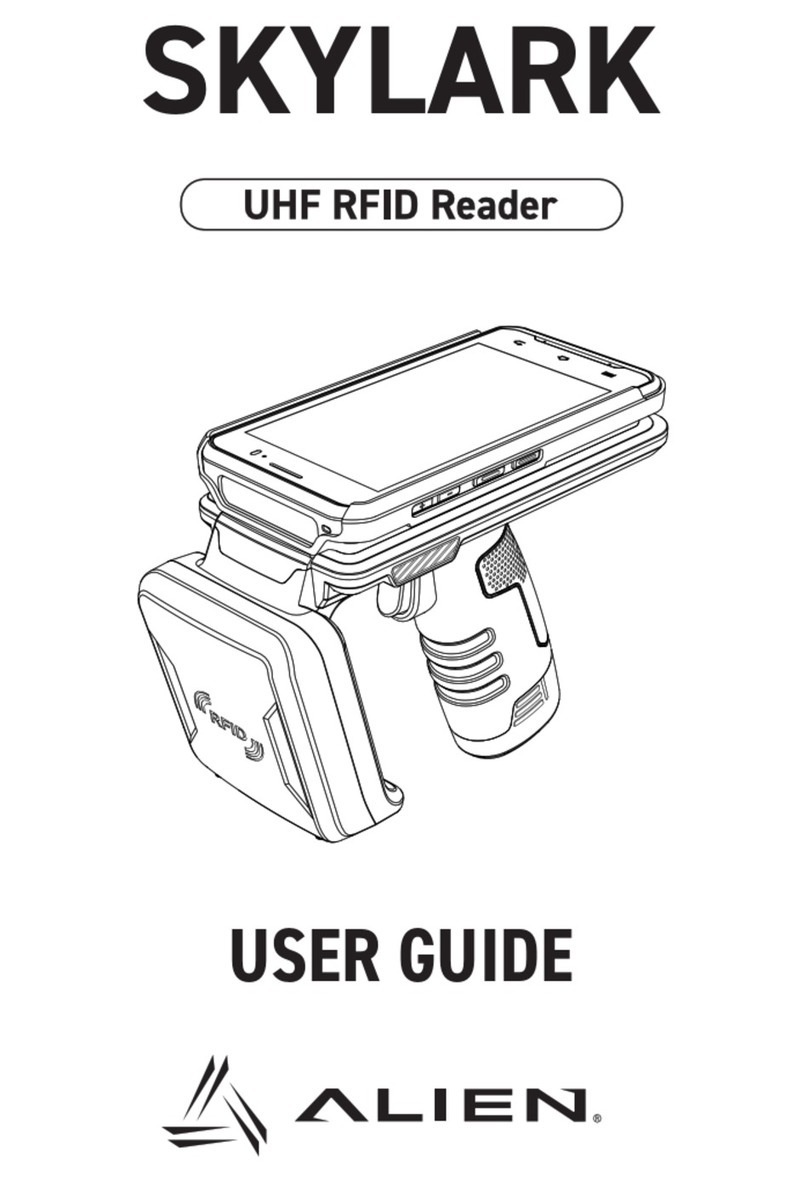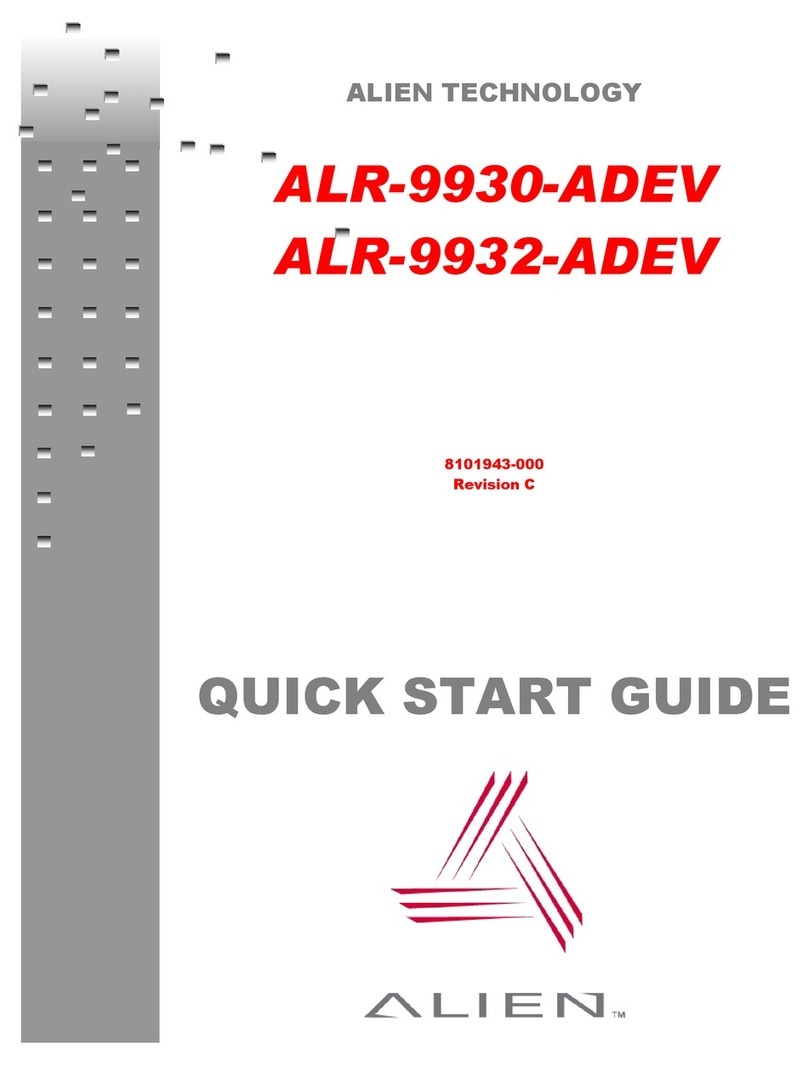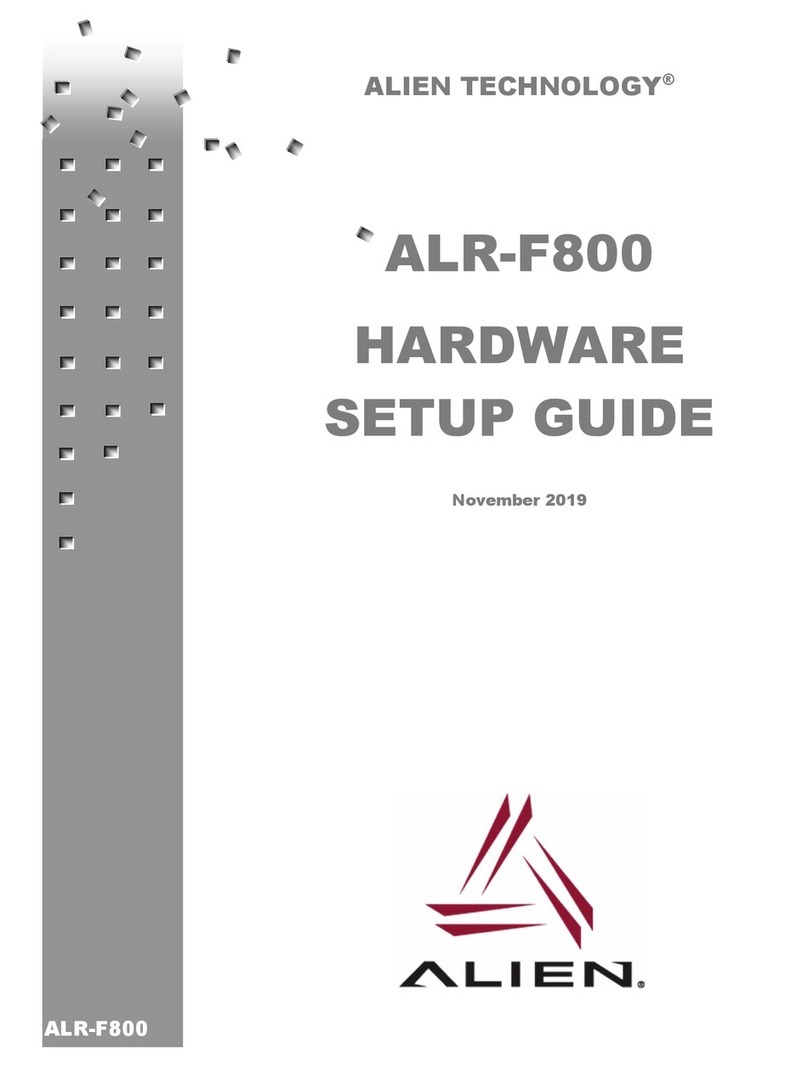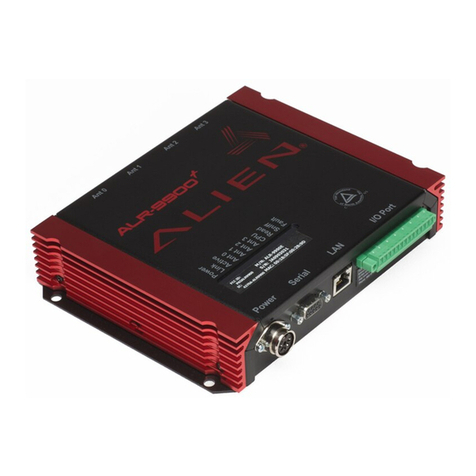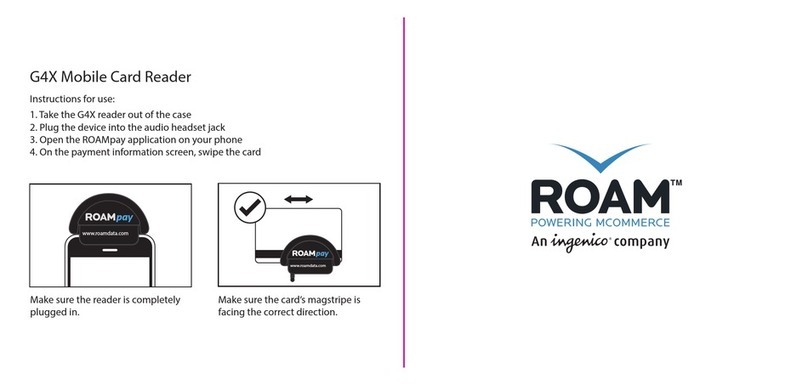
Legal Notices
Copyright ©2013 Alien Technology Corporation. All rights reserved.
Alien Technology Corporation has intellectual property rights relating to technology embodied in the products
described in this document, including without limitation certain patents or patent pending applications in the U.S. or
other countries.
This document and the products to which it pertains are distributed under licenses restricting their use, copying,
distribution and de-compilation. No part of this product documentation may be reproduced in any form or by any
means without the prior written consent of Alien Technology Corporation and its licensors, if any. Third party software
is copyrighted and licensed from Licensors. Alien, Alien Technology, the Alien logo, Higgs, Squiggle, the Squiggle
logo, and other graphics, logos, and service names used in this document are trademarks of Alien Technology
Corporation in the U.S. and other countries. All other trademarks are the property of their respective owners. U.S.
Government approval required when exporting the product described in this documentation.
Federal Acquisitions: Commercial Software -- Government Users Subject to Standard License Terms and Conditions.
U.S. Government: If this Software is being acquired by or on behalf of the U.S. Government or by a U.S. Government
prime contractor or subcontractor (at any tier), then the Government's rights in the Software and accompanying
documentation shall be only as set forth in this license; this is in accordance with 48 C.F.R. 227.7201 through
227.7202-4 (for Department of Defense (DoD) acquisitions) and with 48 C.F.R. 2.101 and 12.212 (for non-DoD
acquisitions).
DOCUMENTATION IS PROVIDED “AS IS” AND ALL EXPRESS OR IMPLIED CONDITIONS, REPRESENTATIONS
AND WARANTEES, INCLUDING ANY IMPLIED WARRANTY OF MERCHANTABILITY, FITNESS FOR A
PARTICULAR PURPOSE OR NON-INFRINGMENT ARE HEREBY DISCLAIMED, EXCEPT TO THE EXTENT THAT
SUCH DISCLAIMERS ARE HELD TO BE LEGALLY INVALID.
FCC Compliance
This equipment has been tested and found to comply with the limits for Class A digital device, pursuant to Part 15 of
the FCC Rules. These limits are designed to provide reasonable protection against harmful interference when the
equipment is operated in a commercial environment. This equipment generates, uses and can radiate radio
frequency energy and, if not installed and used in accordance with instruction manual, may cause harmful
interference with radio communications. Operation of this equipment in a residential area is likely to cause harmful
interference in which case the user will be required to correct the interference at his expense.
Any change or modification to this product voids the user’s authority to operate per FCC Part 15 Subpart A. Section
15.21 regulations.
Industry Canada Compliance
Operation is subject to the following two conditions: (1) this device may not cause interference and (2) this device
must accept any interference, including interference that may cause undesired operation of the device.
This device has been designed to operate with an antenna having a maximum gain of 6dBi. Antenna having a higher
gain is strictly prohibited per regulations of Industry Canada. The required antenna impedance is 50 ohms.
To reduce potential radio interference to other users, the antenna type and its gain should be so chosen that the
equivalent isotropically radiated power (EIRP) is not more than that required for successful communication.
Caution
Reader antennas should be positioned so that personnel in the area for prolonged periods may safely remain at least
23 cm (9 in) in an uncontrolled environment from the antenna’s surface. See FCC OET Bulletin 56 “Hazards of radio
frequency and electromagnetic fields” and Bulletin 65 “Human exposure to radio frequency electromagnetic fields.”






